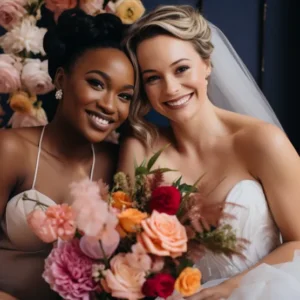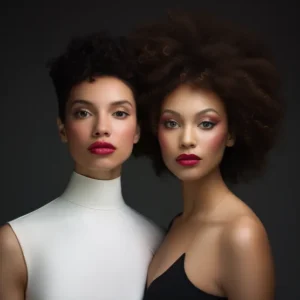In the vast tapestry of global beauty, the concept of cultural inclusivity has emerged as a guiding principle, recognizing and celebrating the rich diversity of beauty traditions worldwide. This article embarks on a journey to explore how various cultures contribute to the collective narrative of beauty, highlighting the unique practices, rituals, and aesthetics that shape the global landscape of cosmetics.
The Essence of Cultural Beauty Traditions
Historical Significance
- Ancient Beauty Rituals: Many cultures have ancient beauty rituals deeply rooted in history, reflecting the significance of aesthetics in societal norms and individual expression.
- Symbolism in Adornments: Adornments, such as tattoos, piercings, and specific hairstyles, often carry profound cultural meanings, serving as visual markers of identity, status, or spiritual beliefs.
Local Ingredients and Formulations
- Natural Resources: Beauty traditions often leverage local flora, fauna, and minerals, showcasing the resourcefulness of communities in utilizing nature’s bounty for skincare and cosmetic purposes.
- Traditional Formulations: Unique blends of herbs, oils, and other natural elements contribute to traditional cosmetic formulations, reflecting cultural knowledge passed down through generations.
Exploring Diverse Beauty Practices
Asian Beauty Traditions
- Skincare Rituals: Asian cultures, such as Korean and Japanese, emphasize elaborate skincare rituals involving multiple steps and a focus on achieving radiant, healthy skin.
- Artistry in Geisha Makeup: The iconic makeup of geishas in Japan is an art form, with white foundation symbolizing purity and vibrant colors conveying specific emotions and social status.
African Beauty Traditions
- Adornment and Body Art: Various African cultures incorporate intricate body art, scarification, and beadwork, with each design holding cultural and individual significance.
- Natural Haircare: Embracing natural hair textures and styles is a key aspect of beauty in many African cultures, promoting a celebration of diverse hair aesthetics.
Indigenous Beauty Traditions
- Ceremonial Paint: Indigenous communities worldwide often use ceremonial paint to adorn the face and body during significant rituals, connecting beauty practices to spirituality and tradition.
- Connection to Nature: Indigenous beauty often emphasizes a harmonious connection with nature, utilizing natural pigments and elements for both cosmetic and symbolic purposes.
Modern Adaptations and Global Influences
Cultural Appropriation vs. Appreciation
- Respectful Cultural Exchange: As beauty trends transcend borders, there is a growing emphasis on respectful cultural exchange, avoiding appropriation and fostering appreciation for diverse traditions.
- Inclusive Representation: The push for inclusive representation in the beauty industry includes showcasing models and influencers from various cultural backgrounds, ensuring a more accurate reflection of global beauty.
Fusion of Traditions
- Global Beauty Blends: The beauty industry is witnessing a fusion of traditional practices, with global brands incorporating elements from diverse cultures into their products and marketing.
- Cross-Cultural Collaborations: Collaborations between beauty brands and cultural influencers contribute to a more inclusive beauty landscape, providing a platform for authentic representation.
Challenges and Celebrations
Preserving Authenticity
- Commercialization Concerns: The commercialization of cultural beauty practices raises concerns about the preservation of authenticity and the risk of diluting meaningful traditions.
- Empowerment Through Education: Empowering communities to share their beauty practices on their terms helps maintain cultural integrity while fostering understanding and appreciation.
Global Celebrations of Diversity
- Cultural Pride Movements: Cultural pride movements celebrate beauty diversity, encouraging individuals to take pride in their cultural identities and beauty practices.
- Dismantling Eurocentric Standards: The global beauty conversation is evolving to challenge Eurocentric beauty standards, acknowledging that beauty comes in myriad forms and expressions.
Embracing Cultural Inclusivity in Beauty
Consumer Empowerment
- Informed Beauty Choices: Empowering consumers with knowledge about the cultural origins of beauty products allows for more informed and culturally respectful purchasing decisions.
- DIY Cultural Beauty: The rise of do-it-yourself (DIY) beauty practices inspired by global traditions encourages individuals to explore and appreciate diverse cultural beauty rituals.
Education and Appreciation
- Cultural Sensitivity Training: Beauty professionals benefit from cultural sensitivity training to ensure respectful and inclusive practices, avoiding unintentional appropriation.
- Global Beauty Education: Incorporating global beauty education into curricula helps beauty professionals understand and appreciate the diversity of beauty traditions worldwide.
The Future of Cultural Inclusivity in Beauty
Elevating Authentic Voices
- Authentic Cultural Influencers: The future of cultural inclusivity in beauty lies in amplifying authentic cultural influencers who can share their beauty traditions from a place of understanding and pride.
- Global Beauty Platforms: The rise of global beauty platforms and social media allows for direct storytelling, enabling individuals from diverse cultures to share their beauty narratives.
Industry Accountability
- Ethical Sourcing Practices: Beauty brands are increasingly held accountable for ethically sourcing ingredients and collaborating respectfully with communities to ensure fair representation.
- Diverse Leadership: Fostering diversity in leadership roles within the beauty industry promotes inclusive decision-making and ensures that cultural perspectives are valued and respected.
Conclusion
Cultural inclusivity in beauty is not just a trend; it is a paradigm shift that recognizes the inherent beauty in the diverse practices and traditions found around the world. As the beauty industry continues to evolve, embracing cultural inclusivity becomes a powerful force for positive change. By celebrating and respecting the richness of cultural beauty traditions, we pave the way for a more inclusive, informed, and globally connected beauty landscape where every individual’s unique beauty is not only recognized but also celebrated.



